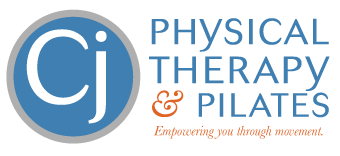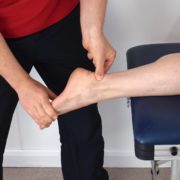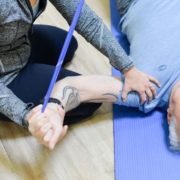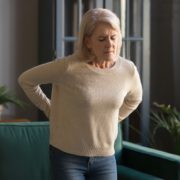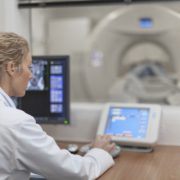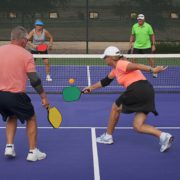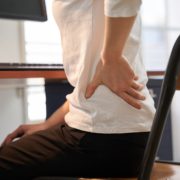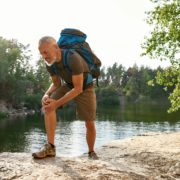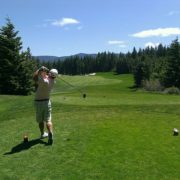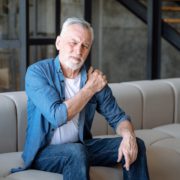Foot and Heel Pain: How to Move Beyond Short-Term Relief
If you’ve ever stepped out of bed and felt a stabbing pain in your heel, there’s a good chance you were experiencing plantar fasciitis – one of the most common causes of heel pain in adults.
More than two million Americans struggle with it each year. Cortisone shots, orthotics, and rest are often prescribed, but these strategies usually provide only temporary relief – and in some cases, can even prolong the problem.
Recovering from plantar fasciitis starts with understanding why it happens in the first place. Once you know the root cause, the path forward becomes clearer – and today there are modern, natural options that focus on healing rather than simply masking pain. That’s the aim of this article.
So let’s dive in: how do you move past short-term relief and get back to doing the activities you love, without heel pain holding you back?
What is Plantar Fasciitis?
The plantar fascia is a thick band of tissue running along the bottom of your foot, connecting your heel bone to your toes. Its job is to support your arch and absorb shock when you walk, run, or jump. When this tissue is overloaded, it can become irritated – and if that continues, the fascia begins to degenerate. The result is plantar fasciitis, marked by pain at the base of the heel, especially during the first few steps in the morning or after long periods of sitting.
Many assume plantar fasciitis is an inflammatory condition, but that isn’t the full picture. It’s more accurately a degenerative process, where the collagen fibers of the fascia weaken and lose their ability to tolerate load. This helps explain why treatments aimed only at reducing inflammation, such as cortisone shots, rarely provide lasting relief.
Why Traditional Treatments Fall Short
Cortisone injections have long been a standard treatment for heel pain. While they may reduce pain briefly, research shows the benefit is temporary – often only a few weeks or months. Repeated injections also carry risks. Cortisone does not repair the damaged fascia – in fact – it can weaken collagen and allow the problem to persist. Worse, by masking pain, injections often encourage continued activity that aggravates degeneration.
Custom orthotics are another common approach. These shoe inserts, often prescribed by podiatrists, can redistribute pressure and provide comfort in the short term. But research shows little difference between costly custom orthotics and high-quality prefabricated ones. More importantly, they do not address the underlying weakness or tissue degeneration. Once the initial benefit wears off, the pain often returns – and relying on orthotics indefinitely is impractical and prevents restoration of natural foot strength.
Both cortisone and orthotics may play a role in daily function. But if the goal is to truly heal the fascia and return to full activity, more is needed.
Stimulating Healing – Don’t Mask It
Instead of suppressing symptoms, you want to encourage true healing and pair it with corrective strengthening to keep the tissue healthy. Modern treatments such as shockwave therapy, EMTT, and PRP aim to jump-start your body’s own repair mechanisms instead of impeding them.
A good place to start is extracorporeal shockwave therapy, or ESWT. This non-invasive treatment sends acoustic waves into the fascia to create controlled “microtrauma,” which stimulates collagen regeneration and promotes tissue recovery.
An important complement is Extracorporeal Magnetotransduction Therapy, or EMTT. A 2022 multicenter study in the Journal of Clinical Medicine found that 80 percent of patients with chronic musculoskeletal conditions improved after EMTT, with more than 75 percent maintaining benefits six to twelve months later. In practice, EMTT appears to extend and amplify the positive effects of shockwave therapy by sustaining cellular activity long after treatment sessions.
For those needing an additional boost, platelet-rich plasma (PRP) injections are another option. Though invasive, PRP delivers concentrated growth factors directly into damaged tissue, enhancing the body’s natural healing. A 2023 randomized trial in BMC Musculoskeletal Disorders reported that PRP outperformed corticosteroid injections at reducing pain, improving function, and thinning the plantar fascia at six months. Case reports in the German Journal of Sports Medicine also show excellent outcomes when ESWT and PRP are combined, including full return to sport in runners who had failed other treatments.
Taken together, these therapies form a layered strategy: shockwave jump-starts the healing cascade, EMTT helps sustain it, and PRP provides an extra regenerative boost (if needed). When combined with a structured rehabilitation program, this approach offers a pathway to lasting recovery rather than temporary relief.
Beyond the Foot: Make the Healing Last
What many don’t realize is that chronic plantar fasciitis can also be linked to dysfunction higher up the chain. The pelvic floor, deep core muscles, and hip stabilizers all influence how forces travel through the legs and feet. If these areas are weak or poorly coordinated, the plantar fascia often absorbs stress it wasn’t designed to handle.
Clinical experience shows that individuals with weak core and pelvic floor control often develop altered gait mechanics, leading to excessive strain on the heel with each step. In these cases, treating only the fascia leaves the root cause unaddressed.
A comprehensive plan should therefore include strengthening of the core and pelvic floor, along with intrinsic foot training, alongside regenerative therapy. When these muscles are retrained to provide stability and load-sharing, the fascia is no longer forced to work alone. Over time, this reduces reinjury risk and creates a long-term fix. In essence, regenerative therapy jump-starts tissue healing, while strengthening ensures the fascia remains supported once it recovers.
The Bottom Line
Foot and heel pain can be stubborn, and plantar fasciitis in particular has a reputation for lingering. Cortisone shots and orthotics may provide temporary relief, but they do not restore the health of the fascia or solve the underlying problem. Regenerative therapies, especially shockwave, are supported by strong evidence for reducing pain and improving function in people with chronic plantar fasciitis. When combined with mobility, strength training, and – critically – core and pelvic floor retraining, they provide a durable solution that not only relieves pain but helps prevent it from coming back.
If your heel pain has been persisting for months, it’s worth considering a plan that goes beyond masking symptoms. Lasting relief comes when you treat both the tissue that hurts and the movement system that created the overload in the first place.
Dr. Carrie Jose, Physical Therapy Specialist and Mechanical Pain Expert, owns CJ Physical Therapy & Pilates in Portsmouth, NH, and writes for Seacoast Media Group. If local to Portsmouth, NH, and looking for help, request a FREE Discovery Visit with one of her Specialists by CLICKING HERE.
